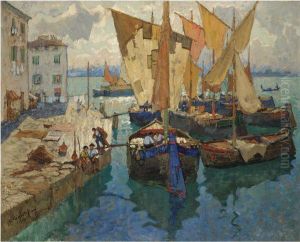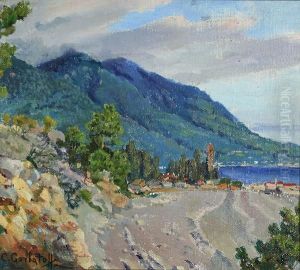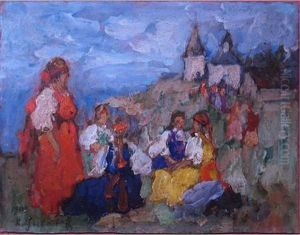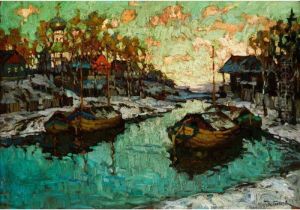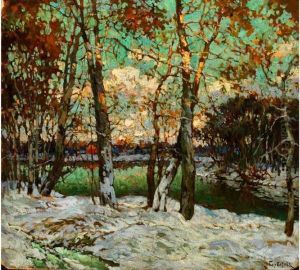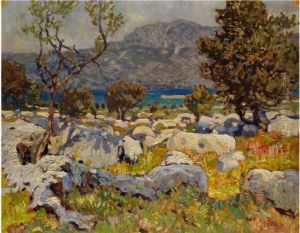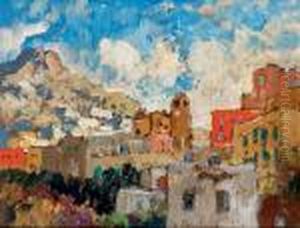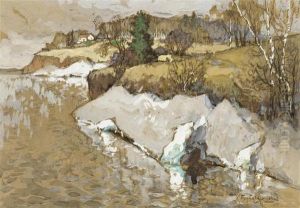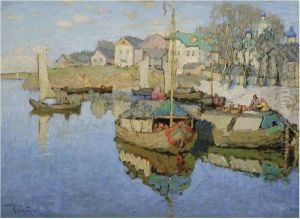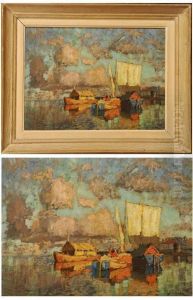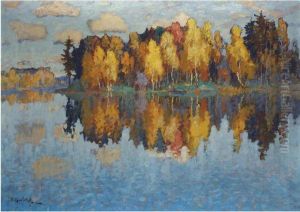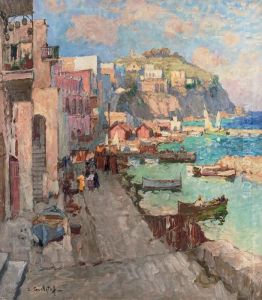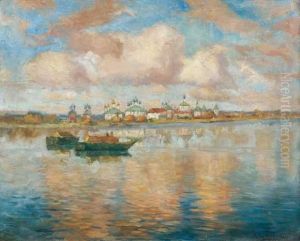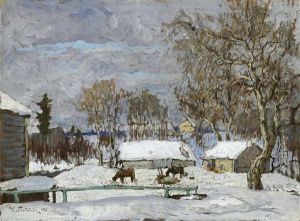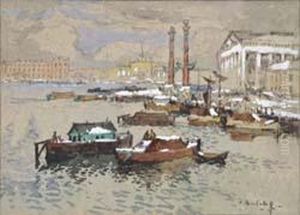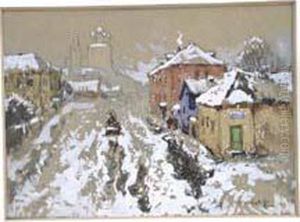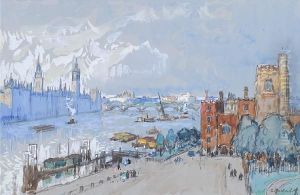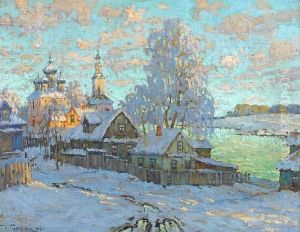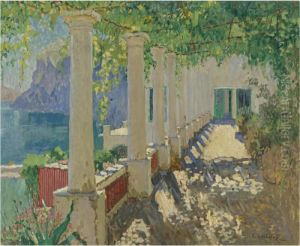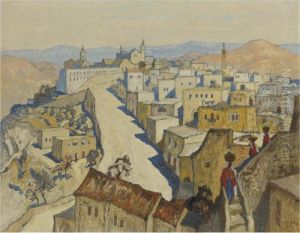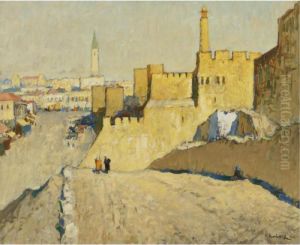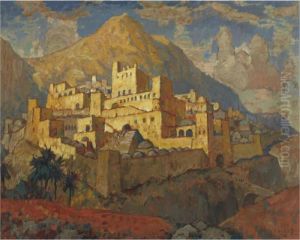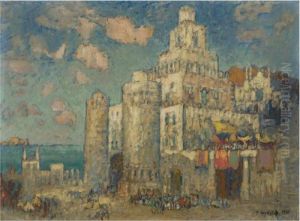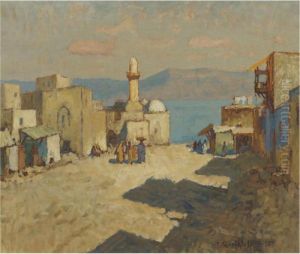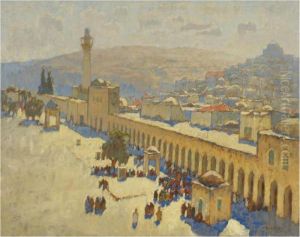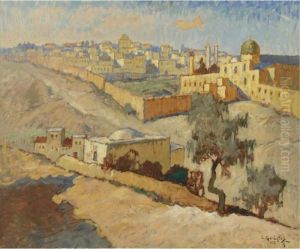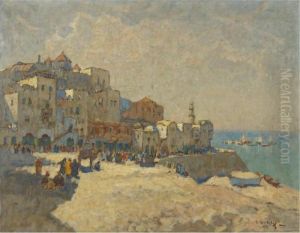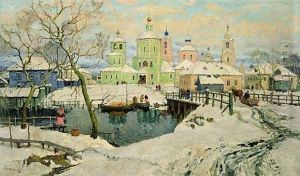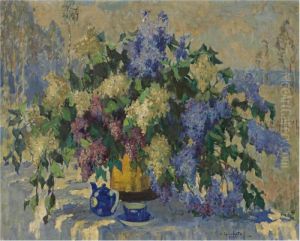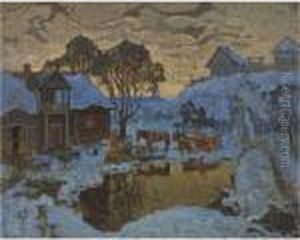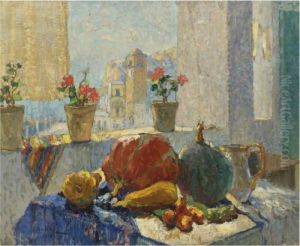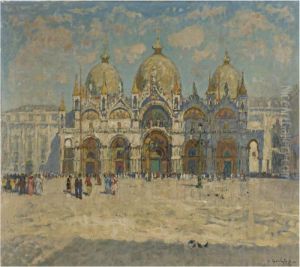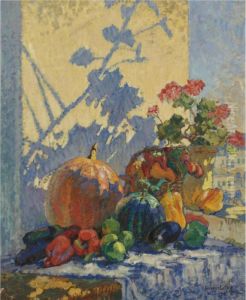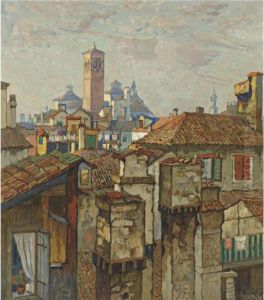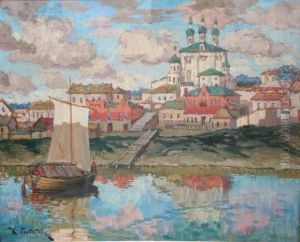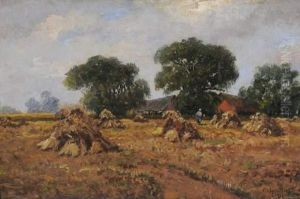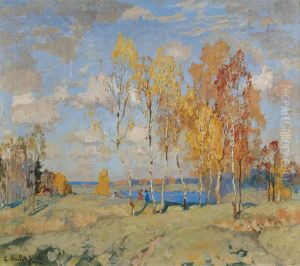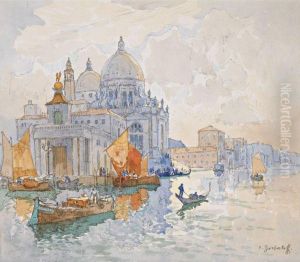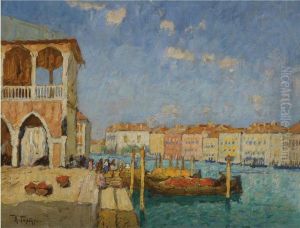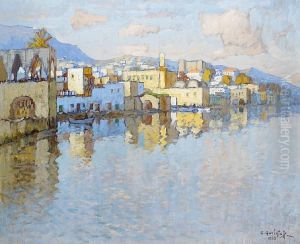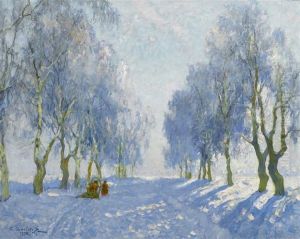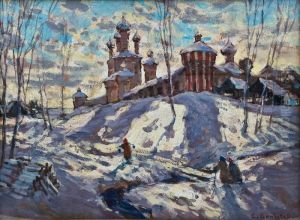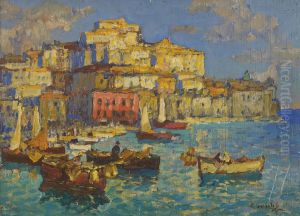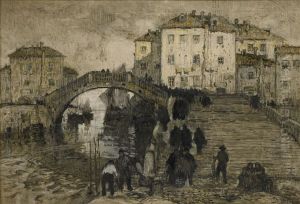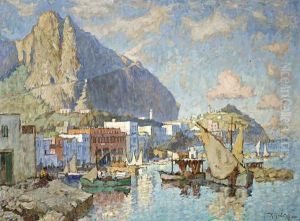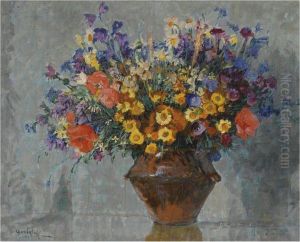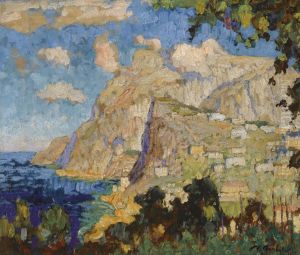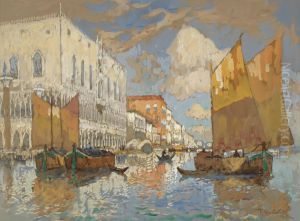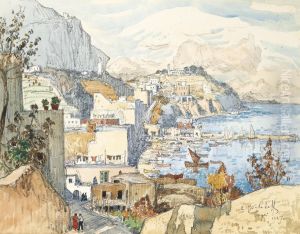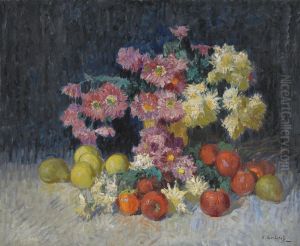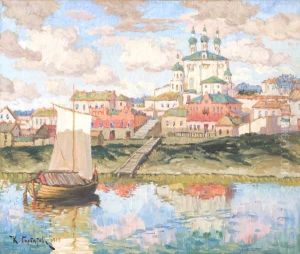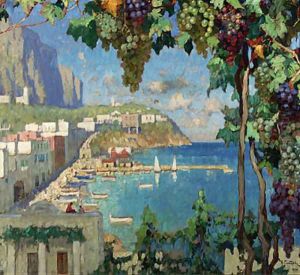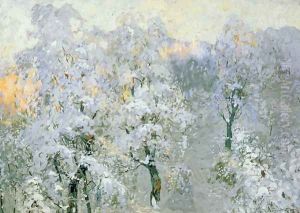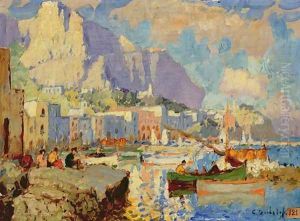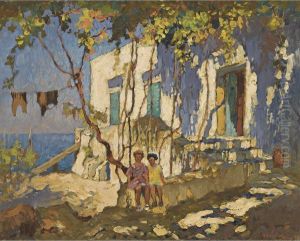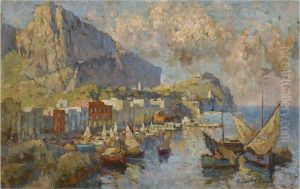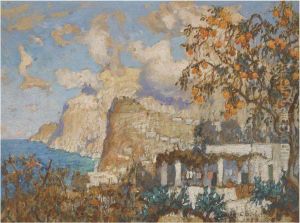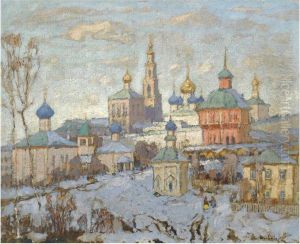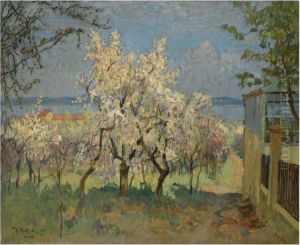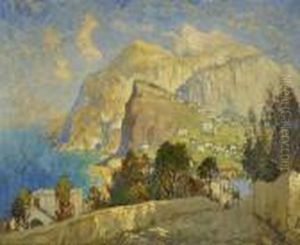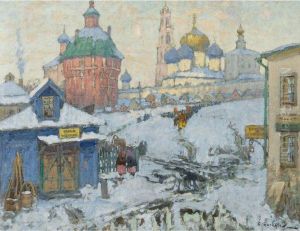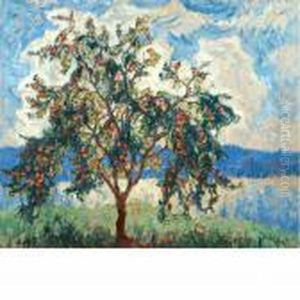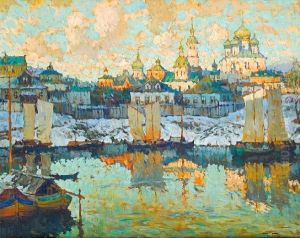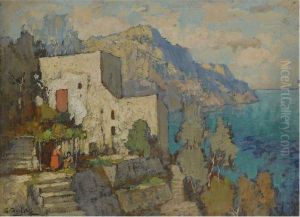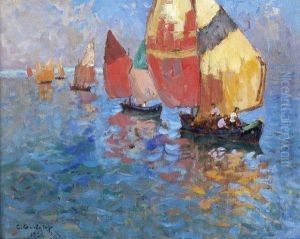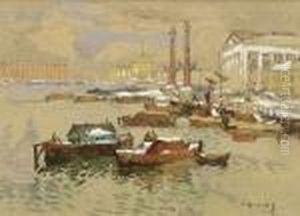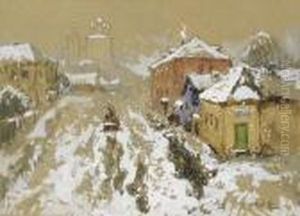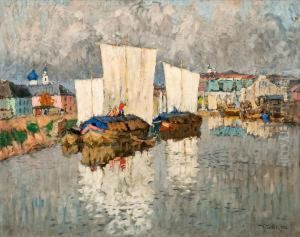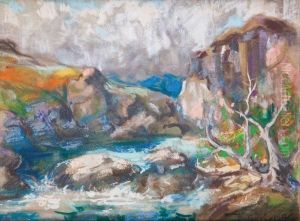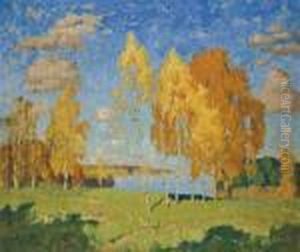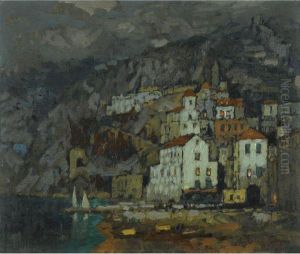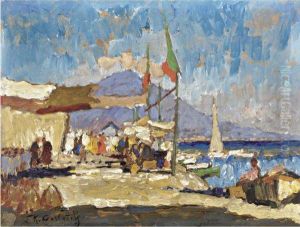Konstantin Ivanovich Gorbatov Paintings
Konstantin Ivanovich Gorbatov was a notable Russian and Soviet painter, born on May 17, 1876, in Stavropol, Russian Empire. His early years were spent in a setting that was deeply entrenched in the natural beauty and historical richness of Russia, elements that would profoundly influence his artistic journey. Gorbatov's family was not affluent, which made his path to becoming an artist a testament to his determination and talent.
After initially studying architecture at the Saint Petersburg Institute of Civil Engineering, Gorbatov's passion for painting led him to the Imperial Academy of Arts in Saint Petersburg, where he studied from 1896 to 1904. His education was not just a period of learning but also a time of significant personal development and artistic experimentation. Gorbatov was particularly influenced by the vibrant art scene in Saint Petersburg and the works of earlier Russian landscape painters.
Following his graduation, Gorbatov traveled extensively across Europe, a journey that expanded his horizons and introduced him to a variety of artistic styles. His travels took him to Germany, Italy, and the island of Capri, among other locations. These experiences enriched his palette and deepened his appreciation for the interplay of light and color, which became hallmark features of his work.
The outbreak of World War I and the subsequent Russian Revolution drastically altered the course of Gorbatov's life. He served in the war and, afterward, found himself in a radically changed Russia. In 1922, seeking stability and the freedom to pursue his art, Gorbatov emigrated to Berlin, where he joined a vibrant community of Russian émigré artists. During this period, his work gained significant recognition, and he was able to exhibit widely across Europe.
Gorbatov's art is characterized by its lyrical realism, a term that captures his ability to blend realistic depiction with a poetic sensibility. He had a particular affinity for landscapes and cityscapes, often imbuing them with a nostalgic or dreamlike quality. His paintings frequently feature the architecture and environs of Italy and Russia, reflecting his love for these regions.
Despite his success abroad, Gorbatov longed to return to his homeland. His wish remained unfulfilled, as he continued to live in Berlin until his death on May 24, 1945, shortly after the end of World War II. Today, Konstantin Ivanovich Gorbatov is remembered as a master of color and mood, whose works offer a window into the soulful and evocative landscapes of his mind's eye.
